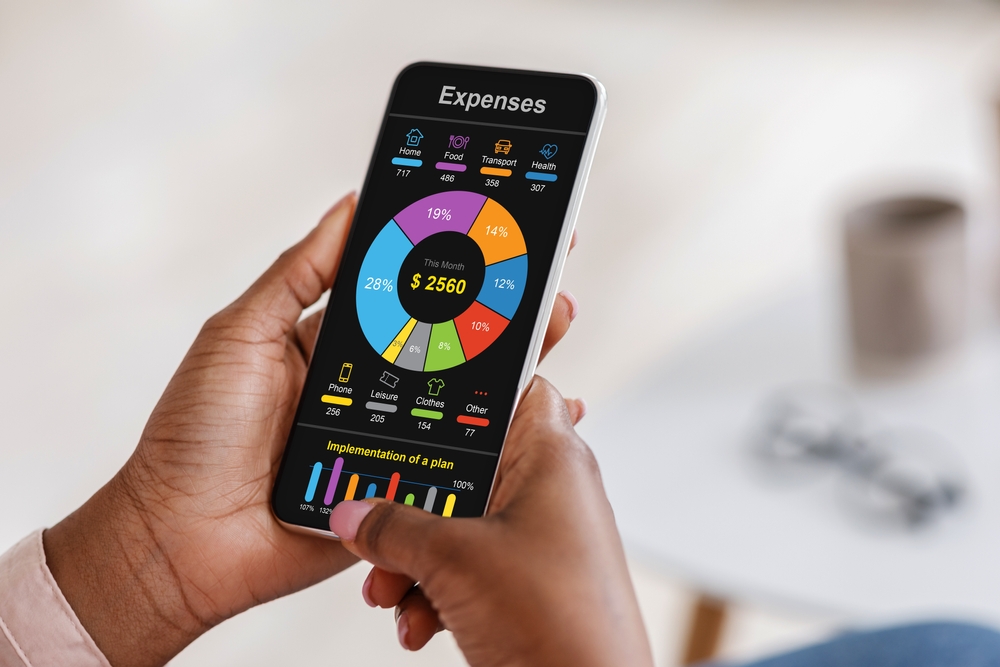A Comprehensive Guide to Creating a Personal Finance Plan for Beginners

Are you ready to take control of your financial destiny? Whether you’re fresh out of college, starting your first job, or simply looking to get your finances in order, creating a personal finance plan is the first step towards financial freedom and security. In this comprehensive guide, we’ll walk you through the process of developing a robust financial plan tailored to your unique needs and goals.

The Importance of a Personal Finance Plan
Before we dive into the nitty-gritty details, let’s take a moment to understand why having a personal finance plan is crucial. A well-crafted financial plan acts as a roadmap, guiding you through the complex landscape of money management. It helps you:
- Set clear financial goals
- Track your income and expenses
- Build and maintain an emergency fund
- Manage debt effectively
- Save for major life milestones
- Invest for the future
- Protect your assets through insurance
By creating and following a personal finance plan, you’re taking proactive steps towards financial stability and peace of mind. So, let’s get started on this exciting journey!
Step 1: Assess Your Current Financial Situation
The first step in creating your personal finance plan is to take stock of where you stand financially. This involves:
- Calculating your net worth: List all your assets (what you own) and liabilities (what you owe). The difference between these two figures is your net worth.
- Tracking your income and expenses: For at least a month, record every penny you earn and spend. This will give you a clear picture of your cash flow.
- Reviewing your credit report: Obtain a free copy of your credit report from each of the three major credit bureaus (Equifax, Experian, and TransUnion) at AnnualCreditReport.com. Review it for accuracy and identify areas for improvement.
Step 2: Define Your Financial Goals
With a clear understanding of your current financial situation, it’s time to set some goals. Your goals should be SMART: Specific, Measurable, Achievable, Relevant, and Time-bound. Some common financial goals include:
- Building an emergency fund
- Paying off credit card debt
- Saving for a down payment on a house
- Funding your children’s education
- Planning for retirement
Remember, your goals should align with your personal values and life aspirations. Don’t be afraid to dream big, but also be realistic about what you can achieve in the short and long term.
Step 3: Create a Budget
A budget is the cornerstone of any solid financial plan. It helps you allocate your resources effectively and ensures you’re living within your means. Here’s how to create a simple budget:
- List your income sources: Include your salary, freelance work, investments, and any other sources of income.
- Categorize your expenses: Divide your expenses into fixed (rent, utilities) and variable (groceries, entertainment) categories.
- Set spending limits: Allocate a specific amount to each expense category based on your income and financial goals.
- Track your spending: Use budgeting apps like Mint or YNAB (You Need A Budget) to monitor your expenses and ensure you’re sticking to your budget.
- Review and adjust regularly: Your budget should be flexible. Review it monthly and make adjustments as needed.
Step 4: Build an Emergency Fund
An emergency fund is your financial safety net, protecting you from unexpected expenses or loss of income. Aim to save 3-6 months’ worth of living expenses in a easily accessible savings account. Here are some tips to build your emergency fund:
- Start small: Even setting aside $50 a month can make a difference over time.
- Automate your savings: Set up automatic transfers from your checking to your savings account.
- Use windfalls wisely: Put tax refunds, bonuses, or gifts towards your emergency fund.
Step 5: Tackle Debt
If you have high-interest debt, particularly credit card debt, paying it off should be a top priority in your financial plan. Consider these strategies:
- Debt avalanche method: Focus on paying off the debt with the highest interest rate first while making minimum payments on other debts.
- Debt snowball method: Pay off the smallest debt first for psychological wins, then move on to larger debts.
- Debt consolidation: Consider consolidating multiple high-interest debts into a single, lower-interest loan.
For more in-depth strategies on debt repayment, check out this helpful guide from NerdWallet.
Step 6: Start Investing
Investing is key to building long-term wealth and achieving your financial goals. As a beginner, consider these investment options:
- 401(k) or other employer-sponsored retirement plans: Take advantage of any employer match offered.
- Individual Retirement Accounts (IRAs): Choose between Traditional and Roth IRAs based on your tax situation.
- Index funds: These offer broad market exposure with low fees.
- Robo-advisors: Platforms like Betterment or Wealthfront offer automated, low-cost investment management.
Remember, investing always carries risk. Do your research and consider consulting with a financial advisor before making significant investment decisions.
Step 7: Protect Your Assets
Insurance is an often overlooked but crucial component of a comprehensive financial plan. Consider these types of insurance:
- Health insurance
- Life insurance
- Disability insurance
- Homeowners or renters insurance
- Auto insurance
Evaluate your needs and shop around for the best coverage at competitive rates.
Personal Finance Plan Comparison Table
To help you visualize different approaches to personal finance planning, here’s a comparison table of three common strategies:
| Feature | Traditional 50/30/20 Budget | Zero-Based Budgeting | Values-Based Budgeting |
|---|---|---|---|
| Core Principle | 50% needs, 30% wants, 20% savings/debt | Every dollar has a job | Align spending with personal values |
| Flexibility | Moderate | Low | High |
| Best For | Beginners, stable income | Detail-oriented individuals | Those seeking meaning in finances |
| Difficulty | Easy | Moderate | Moderate |
| Tools Needed | Basic spreadsheet or app | Detailed tracking system | Reflective exercises, spreadsheet |
| Focus | Broad categories | Specific line items | Personal priorities |
| Savings Rate | 20% (recommended) | Varies | Varies |
| Debt Payoff | Included in 20% | Specific allocation | Based on personal value placed on debt freedom |
| Pros | Simple to implement | Highly detailed control | Promotes intentional spending |
| Cons | May not fit all income levels | Time-consuming | Requires deep self-reflection |
Choose the budgeting method that aligns best with your personality and financial goals. Remember, the best plan is one you can stick to consistently.
Personalized Recommendations
Based on my experience helping individuals create financial plans, here are some additional tips to enhance your financial journey:
- Educate yourself: Personal finance is a vast field. Continuously educate yourself through books, podcasts, and reputable financial websites. The Balance offers a wealth of information for beginners.
- Start a side hustle: Consider ways to increase your income through freelancing or a part-time job. Websites like Upwork or Fiverr can be great places to start.
- Practice mindful spending: Before making a purchase, ask yourself if it aligns with your values and financial goals. This can help curb impulsive spending.
- Celebrate milestones: Set small, achievable financial goals and reward yourself (within reason) when you reach them. This positive reinforcement can help you stay motivated.
- Seek professional advice: If you’re feeling overwhelmed, consider consulting with a financial advisor. Look for a fee-only advisor who is a fiduciary, meaning they are legally obligated to act in your best interest.
Remember, personal finance is personal. What works for others may not work for you, and that’s okay. The key is to find a system that you can maintain consistently over time.
Frequently Asked Questions
To address some common concerns about personal finance planning, here are five frequently asked questions:
- Q: How much should I be saving each month?
A: While the general rule of thumb is to save 20% of your income, the exact amount depends on your individual circumstances and goals. Start with what you can afford, even if it’s just 5%, and gradually increase your savings rate over time. - Q: Should I pay off debt or save for retirement first?
A: Ideally, you should do both. Focus on paying off high-interest debt while still contributing enough to your retirement account to receive any employer match. Once high-interest debt is paid off, you can increase your retirement contributions. - Q: How can I improve my credit score?
A: The most effective ways to improve your credit score are to pay your bills on time, keep your credit utilization low (under 30% of your available credit), and avoid applying for new credit too frequently. For more detailed strategies, check out this guide from Experian. - Q: Is it better to rent or buy a home?
A: This depends on various factors including your financial situation, local real estate market, and long-term plans. Generally, buying makes more sense if you plan to stay in one place for at least 5-7 years. Use a rent vs. buy calculator like the one offered by The New York Times to help make this decision. - Q: How do I start investing with little money?
A: Many brokerages now offer fractional shares, allowing you to invest in expensive stocks with small amounts of money. You can also consider low-cost index funds or ETFs. Robo-advisors like Acorns allow you to start investing with just a few dollars.
Creating a personal finance plan may seem daunting at first, but remember that it’s a journey, not a destination. Start small, be consistent, and don’t be afraid to adjust your plan as your life circumstances change. With patience and perseverance, you’ll be well on your way to financial success.
For more support and advice, consider joining online communities like r/personalfinance on Reddit or the Bogleheads forum. These platforms offer a wealth of knowledge from experienced individuals and can provide encouragement as you navigate your financial journey.
Remember, the path to financial freedom starts with a single step. By creating your personal finance plan today, you’re investing in a more secure and prosperous future. Here’s to your financial success!


